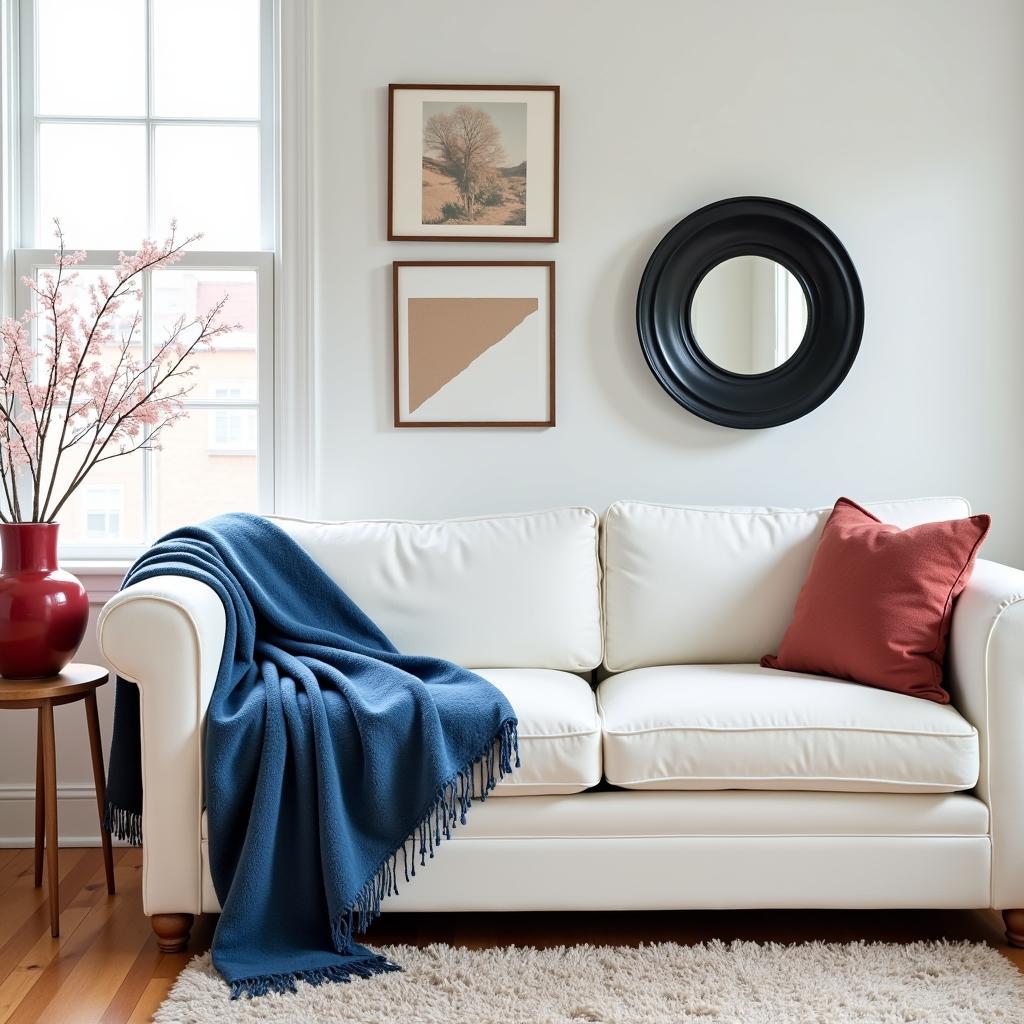For centuries, cultures around the world have believed in the power of color to influence energy, emotions, and even spiritual forces. Many traditions associate specific colors with protection and the ability to ward off evil spirits. So, what color wards off evil spirits? The answer isn’t always simple and depends heavily on cultural context, but let’s delve into some common beliefs and explore the fascinating intersection of color and spirituality.
Many believe that vibrant, powerful colors can disrupt negative energy. Red, for example, is often seen as a color of strength and vitality in cultures across the globe. In some traditions, red is used to frighten away evil spirits and protect against negative influences. Similarly, black, often associated with darkness and mystery, can also be a protective color, absorbing negativity and creating a barrier against unwanted spiritual intrusions.
The Power of Color in Different Cultures
Different cultures hold varying beliefs about the colors that offer spiritual protection. In some East Asian cultures, the color red symbolizes good fortune and is used to ward off evil. You might see red envelopes given during Lunar New Year or red strings tied around wrists for protection. Conversely, in some Western cultures, black is associated with mourning and negativity, while white is often seen as a symbol of purity and protection. This is evident in practices such as wearing white clothing during certain religious ceremonies. Have you ever wondered what color is the birthstone for january? Birthstone colors also hold symbolic meaning related to protection and well-being.
Exploring the Protective Properties of Blue
Blue, often associated with peace and tranquility, is also considered a powerful color for protection in many cultures. In the Middle East, the “evil eye” is a common symbol believed to protect against negative energy, and it is often depicted in shades of blue. This belief connects blue to spiritual defense. If you’re curious about other birthstone colors, you might wonder what is the birthstone color for july? It’s fascinating how different cultures attach different meanings to colors.
Using Color for Protection in Your Home
 Incorporating Protective Colors in Home Decor
Incorporating Protective Colors in Home Decor
How can you utilize color to create a more protected and positive space in your home? Incorporating certain colors into your decor can be a simple yet powerful way to invite positive energy and create a sense of security. Painting a front door black is a tradition in some cultures, believed to deter negative spirits from entering. Similarly, using accents of red, blue, or white in your interior design can be both aesthetically pleasing and symbolically significant. If you’re intrigued by color symbolism and character representation, you might be interested to know what color is xiao’s hair. Character design often uses color strategically to convey personality and meaning.
What Colors Should I Avoid?
While certain colors are believed to protect against evil spirits, some are thought to attract negative energy. It’s important to note that these beliefs vary widely across cultures. What may be considered an unlucky color in one culture may be seen as auspicious in another. However, being mindful of these cultural associations can help you make informed choices about the colors you surround yourself with.
Does the Shade of Color Matter?
Yes, the shade of a color can influence its perceived protective properties. A deep, rich blue might be seen as more protective than a pale, pastel blue. Similarly, a vibrant, fiery red might be considered more potent for warding off evil than a soft, muted pink. The intensity and saturation of a color can play a role in its symbolic meaning. Even eye colors can hold symbolic weight. For instance, some people find themselves curious about what color is robert pattinson’s eyes.
“Color is a powerful tool. Used intentionally, it can create an environment that feels not only aesthetically pleasing but also spiritually nourishing and protected,” says renowned color therapist, Dr. Anya Sharma.
“The meaning we ascribe to color is deeply influenced by cultural context. It’s important to understand these nuances to effectively utilize color for spiritual purposes,” adds cultural anthropologist, Dr. Ben Carter.
In conclusion, the question of what color wards off evil spirits has a multifaceted answer, rooted in cultural beliefs and traditions. While there’s no universally agreed-upon “magic color,” understanding the symbolism associated with different colors can empower you to create a living space that feels both beautiful and protected. Remember, the most important aspect is choosing colors that resonate with you and create a sense of peace and well-being. What color makes you feel most safe and secure? That, perhaps, is the most potent protection of all. Are you interested in learning more about birthstones and their colors? You could explore what color birthstone is leo.
FAQ
-
Is there scientific evidence supporting the use of color for spiritual protection? While scientific evidence in this area is limited, the impact of color on mood and emotions is well-documented.
-
Can I use multiple protective colors together? Absolutely! Combining different protective colors can create a layered approach to spiritual defense.
-
What if I don’t like the colors traditionally associated with protection? The most important factor is choosing colors that resonate with you and create a sense of peace.
-
Are there any other ways to protect myself from negative energy? Practices like meditation, mindfulness, and energy clearing can complement the use of color for protection.
-
Can I change the colors in my home based on my needs? Yes, adapting your color scheme to reflect your evolving spiritual journey can be a powerful practice.
-
How can I learn more about color symbolism in different cultures? Researching specific cultural traditions and consulting with experts can provide valuable insights.
-
Does the material of the colored object matter? While the color itself is often the primary focus, the material can also hold symbolic meaning in some cultures.
For further assistance, please contact us at Phone Number: 0373298888, Email: [email protected], or visit our address at 86 Cầu Giấy, Hanoi. We have a 24/7 customer service team.
